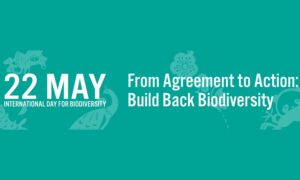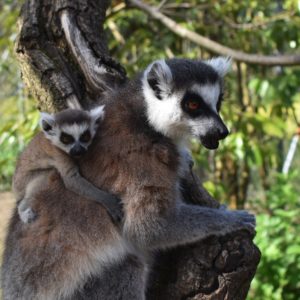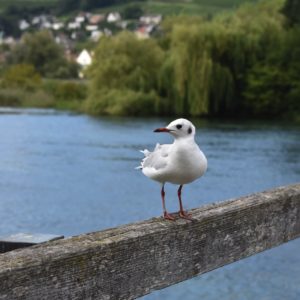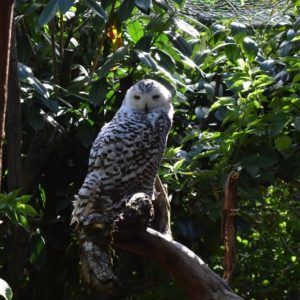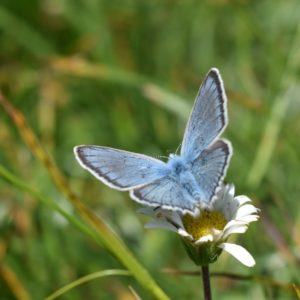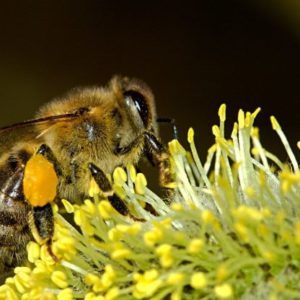Nouvelle
International Day for Biological Diversity
Biodiversity is the living fabric of our planet. It underpins human well-being in the present and in the future, and its rapid decline threatens nature and people alike. On 22 May, we celebrate the International Day for Biological Diversity, to raise awareness of the vital importance of preserving biodiversity. As a global hub for environmental governance, Geneva is home to many organizations active in safeguarding biodiversity.
About
The International Day for Biological Diversity, celebrated each year on May 22, aims to increase understanding and awareness of biodiversity issues. Although it was originally celebrated in late December, the UN General Assembly later decided to move the date to 22 May, which commemorates the adoption of the Convention on Biological Diversity (CBD) in 1992.
Biodiversity is the living fabric of our planet. It underpins human well-being in the present and in the future, and its rapid decline threatens nature and people alike. According to the latest Global Assessment by the Intergovernmental Science-Policy Platform on Biodiversity and Ecosystem Services (IPBES), human activities are driving biodiversity loss at an unprecedented rate. However, the assessment also indicated that solutions existed and that it was not too late to act.
2023 Theme | From agreement to action: build back biodiversity
As the global community is called to re-examine our relationship to the natural world, one thing is certain: despite all our technological advances, we are completely dependent on healthy and vibrant ecosystems for our water, food, medicines, clothes, fuel, shelter, and energy, to name a few. Respecting, protecting, and repairing our biological wealth is a must.
This year is special in terms of biodiversity conservation, especially with the adoption of the Kunming-Montreal Global Biodiversity Framework, a historic agreement signed in December 2022 that sets goals and concrete measures to stop and reverse the loss of nature by 2050.
That is why the theme of the International Day for Biological Diversity is from agreement to action: build back biodiversity. The slogan promotes the idea that, now that we have an action plan agreed upon at a global level, we must implement all the measures that the agreement contemplates before 2030. Only in this way will we be able to obtain protected and sustainable biological diversity by 2050.
On the occasion of the International Day for Biodiversity 2023, a statement from Mr. David Cooper, Acting Executive Secretary of the Convention on Biological Diversity (CBD)
Kunming-Montreal Global Biodiversity Framework
The Kunming-Montreal Global Biodiversity Framework (GBF) was adopted during the fifteenth meeting of the Conference of the Parties (COP 15) following a four-year consultation and negotiation process. This historic Framework, which supports the achievement of the Sustainable Development Goals and builds on the Convention’s previous Strategic Plans, sets out an ambitious pathway to reach the global vision of a world living in harmony with nature by 2050. Among the Framework’s key elements are 4 goals for 2050 and 23 targets for 2030.
The implementation of the Kunming-Montreal Global Biodiversity Framework will be guided and supported through a comprehensive package of decisions also adopted at COP 15. This package includes a monitoring framework for the GBF, an enhanced mechanism for planning, monitoring, reporting and reviewing implementation, the necessary financial resources for implementation, strategic frameworks for capacity development and technical and scientific cooperation, as well as an agreement on digital sequence information on genetic resources.
In adopting the Kunming-Montreal Global Biodiversity Framework, all Parties committed to setting national targets to implement it, while all other actors have been invited to develop and communicate their own commitments. At the next meeting of the Conference of the Parties in 2024 in Türkiye, the world will take stock of the targets and commitments that have been set.
Importance of Biodiversity
Scientists estimate that there are at least 8 million species of plants and animals living on earth today, including humans. The ecosystems in which these species live are incredibly complex and every piece of an ecosystem depends on the others like a jigsaw puzzle. Humans are immersed in ecosystems and depend on these interconnected networks of plants, animals, and people. However, human activities are significantly impacting ecosystems, for instance through man-made climate change, pollution, and habitat loss. By removing just one species as a result of climate change, pollution, habitat loss, or some other natural or man-made factors, a domino effect can occur that has a big impact on the entire ecosystem.
A healthy biodiversity and functioning ecosystems are essential for human societies in numerous ways. About half of the world’s GDP – about 44 trillion USD – is dependent on natural resources, while nature provides at least $125 trillion worth of services annually. Nature also protects our health in many ways. As the current pandemic has shown, the increasing negative impact of human activities on the environment severely threatens human and ecosystem health. Furthermore, as the UN Special Rapporteur on human rights and the environment pointed out in one of his latest report, ecosystem degradation and the decline of biodiversity are threatening the rights to life, health, food, a healthy environment, water, an adequate standard of living and culture.
Human negative impact on biodiversity has reached an unprecedented scale. About 75% of terrestrial environment and 66% of the marine environment have been significantly altered by human actions. Approximately 1 million animal and plant species are now threatened with extinction. Overall, current negative trends in biodiversity and ecosystems are undermining progress towards the Sustainable Development Goals (SDGs). The main global drivers of biodiversity loss are climate change, invasive species, over-exploitation of natural resources, pollution and urbanization. Without rapid and ambitious action to reverse these trends and safeguard nature, we are at risk of failing to achieve the 2030 Agenda.
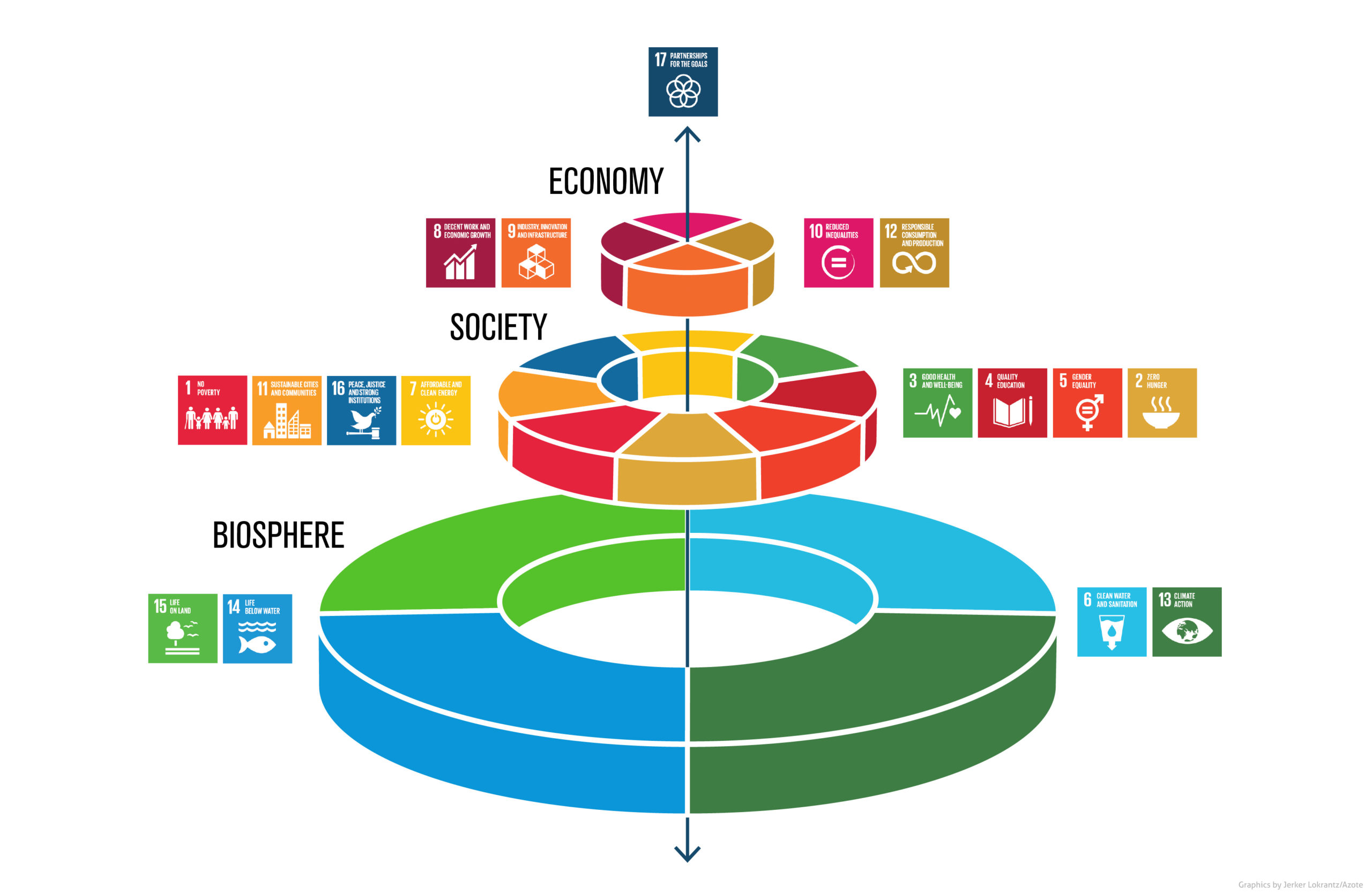
A healthy biosphere, with a rich biodiversity and functioning ecosystems, is the foundation to achieve the societal and economic goals of the SDGs. Source: Stockholm Resilience Centre
Role of Geneva
Various international and local organizations in Geneva – listed below in alphabetical order – are engaged in the protection and conservation of our biological diversity.
International Geneva
Convention on International Trade in Endangered Species of Wild Fauna and Flora (CITES)
CITES is a multilateral agreement aiming to ensure that international trade in specimens of wild animals and plants does not threaten their survival. AS of today, it accords varying degrees of protection to more than 37,000 species of animals and plants, whether they are traded as live specimens, fur coats or dried herbs.
International Trade Centre (ITC)
ITC is a development agency dedicated to supporting the internationalization of small and medium-sized enterprises (SMEs). The agency enables SMEs in developing and transition economies to become more competitive and connect to international markets for trade and investment, thus raising incomes and creating job opportunities. Through its “Green to Compete” strategy, ITC supports SMEs to contribute to a nature-positive economy through conservation & sustainable use of biodiversity.
International Union for Conservation of Nature (IUCN)
IUCN is the world’s largest conservation network with the mission to influence, encourage and assist societies throughout the world to conserve the integrity and diversity of nature. The IUCN Red List is the world’s most comprehensive information source on the global extinction risk status of animal, fungus and plant species.
Luc Hoffman Institute
The Luc Hoffmann Institute follows the principles of systems thinking, convening and co-creation to incubate and accelerate new ideas and approaches that will deliver significant gains for biodiversity. By convening a wide range of stakeholders, the institute is a leading catalyst for innovation and transformative change to maintain biodiversity.
Mava Foundation
Founded by naturalist Luc Hoffman, MAVA supports conservation that benefits people and nature. MAVA accompanies key partners on their conservation journey, helping them develop the skills they need and strengthening their ability to deliver.
Partnership for Environment and Disaster Risk Reduction (PEDRR)
PEDRR is a global alliance of UN agencies, NGOs and specialist institutes seeking to promote and scale-up implementation of ecosystem-based disaster risk reduction and ensure it is mainstreamed in development planning at global, national and local levels. Among other activities, PEDRR is advocating for an ambitious post-2020 biodiversity framework, notably through the promotion of Nature-based Solutions.
Ramsar Convention on Wetlands
The Ramsar Convention aims to ensure the conservation and wise use of all wetlands through local and national actions and international cooperation, as a contribution toward achieving sustainable development throughout the world. Although wetlands cover only around 6% of the Earth’s surface, they provide vital habitats for 40% of the world’s species.
The Economics of Ecosystems and Biodiversity (TEEB)
TEEB is a global initiative focused on making nature’s values visible. Its principal objective is to mainstream the values of biodiversity and ecosystem services into decision-making at all levels. It aims to achieve this goal by following a structured approach to valuation that helps decision-makers recognize the wide range of benefits provided by ecosystems and biodiversity, demonstrates their values in economic terms and, where appropriate, captures those values in decision-making.
United Nations Conference on Trade and Development (UNCTAD)
As part of its work on trade and the environment, UNCTAD has launched the BioTrade Initiative to support the objectives of the CBD. BioTrade refers to those activities of collection, production, transformation, and commercialization of goods and services derived from native biodiversity under the criteria of environmental, social and economic sustainability. Since 1996, the initiative has developed a unique portfolio of global, regional and country programmes as well as a network of partners and practitioners working in over 65 countries.
United Nations Economic Commission for Europe (UNECE)
UNECE promotes sustainable use and preservation of ecosystems by supporting the development of biodiversity conservation policies in the region, and the integration of nature conservation in sectoral policies. UNECE contributes to the work of the CBD through information and expertise, notably on forestry and environmental-economic accounting.
United Nations Environment Programme (UNEP)
The work of UNEP on biodiversity is led from Nairobi, where the Ecosystem division and other UNEP centres on the topic have their headquarters. The Geneva-based UNEP agencies are nonetheless engaged in various streams of work to protect nature and halt biodiversity loss. For instance, the UNEP Climate Finance Unit and the UNEP Finance Initiative (UNEP FI) work to bring nature to the heart of financial decision-making.
United Nations Programme on Reducing Emissions from Deforestation and Forest Degradation (UN REDD)
The UN-REDD Programme is a collaborative initiative from the FAO, UNDP and UNEP. The programme supports nationally led REDD+ processes and promotes the informed and meaningful involvement of all stakeholders in national and international REDD+ implementation. By protecting forests, REDD+ mechanisms can not only maintain vital ecosystem services and preserve globally significant biodiversity but also sustain livelihood and mitigate climate change.
WWF International
WWF is one of the leading organizations in wildlife conservation and endangered species. Working in numerous countries around the globe, WWF collaborates with people to develop and deliver innovative solutions that protect communities, wildlife, and the places in which they live. WWF works to help local communities conserve the natural resources they depend upon; transform markets and policies toward sustainability, and protect and restore species and their habitats.
Local Geneva
Association pour la Sauvegarde du Léman (ASL)
ASL is a joint French and Swiss non-profit organisation dedicated to safeguarding the water quality and aquatic ecosystems of the area around the Lac Léman (Lake Geneva), including both the lake itself and its many rivers. ASL works to preserve the rich biodiversity of the region, including its aquatic plants and bird species.
Bioparc Genève
Located just a stone’s throw from the city centre, the Bioparc Geneva is home to 250 animals, a third of which are threatened species in the wild. Its team of wildlife experts and enthusiasts works for the conservation of animal species both locally and by supporting projects abroad. Open to visitors every day, the park offers many educational activities to raise awareness about the importance of biodiversity. It is a centre of competence and expertise on wild, local and exotic animals, carrying out research and training activities.
Canton of Geneva
Aware of the rich biodiversity of its territory, the Canton of Geneva has developed a Biodiversity Strategy 2030 to protect its natural ecosystems and the services they provide to its residents. Thanks to the presence of the lake and the forests, natural ecosystems in Geneva occupy a little more than a quarter of the cantonal territory, of which 2.7% is made up of protected areas. The Canton also developed the Nature in the City program, aiming to promote biodiversity and improve the living environment in urban spaces by maintaining and creating environments favourable to native flora and fauna. In collaboration with local associations and partners, the Canton also launched the platform Dans Ma Nature, a digital space to strengthen the awareness of the general public in favour of biodiversity.
City of Geneva
Green spaces make up nearly 20% of the territory of the City of Geneva. It includes the animal park in Bois-de-la-Bâtie, which participates in the conservation of local species and fosters contact between the urban population and the fauna of the region. The City of Geneva is implementing various practices to develop biodiversity in the urban environment, from green space management to the creation of environments favourable to indigenous flora and fauna and the elimination of pesticides.
Conservatory and Botanical Garden
With more than 200 years of history and fidelity to the spirit of its founders, the Conservatory and Botanical Garden of the City of Geneva (CJB) carries out its missions of exploration, research, education and protection, while continually enriching its collections, and ranks as one of the five most important in the world. The CJB offers to its numerous visitors a space of beauty and relaxation, of instruction on the conservation of a too-often, threatened nature while leading numerous regional, national and international research programmes, using the most modern techniques.
Les Défricheuses
Les Défricheuses works in favour of short circuits, respect for nature and healthy and sustainable food. In particular, it aims to stimulate the development of projects and tracks for the promotion of nature in the city, facilitate the pooling and exchange of materials, resources and knowledge, and create social links through activities related to urban agriculture, the preservation of biodiversity and the transmission of know-how, and promote the image of Geneva as a city of sustainable development.
Faune Genève
Faune Genève is a non-profit association aiming at protecting and raising awareness of the fauna of Geneva. Its website is an official platform for naturalists and wildlife observers in the region.
La Libellule
La Libellule is a non-profit association dedicated to raising public awareness of nature through two poles: field activities organized mainly in the Geneva region and a nature centre, an educational and meeting place, located in the heart of the city.
Museum of Natural History
With nearly 15 million specimens, the Museum‘s collection is the largest natural history museum in Switzerland, and among the most important in charge of natural science collections.
Pro Natura
Pro Natura is the oldest nature preservation organization in Switzerland, with several protected sites with important wildlife such as the Centre Nature Vallon de l’Allondon and the Centre Nature de la Pointe à la Bise in Geneva.
WWF Geneva
WWF Geneva works to implement projects in support of biodiversity, which includes a Panda Club that organizes outings and activities for young people on environmental issues.
1203 Graines
1203 Graines is a « seed library » located within the St-Jean Library in Geneva. It offers a seed exchange system where anyone can deposit, take or exchange seeds, freely and without charge. This initiative aims at developing biodiversity in the urban environment, transmitting know-how, and allowing people to discover and taste non-commercialized varieties.
Events

Global Biodiversity Festival
20 – 22 May 2023 | Online
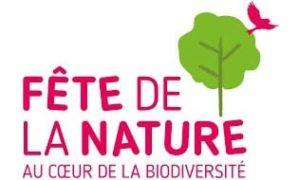
Fête de la Nature
18 – 22 May 2023 | Association de la Fête de la Nature
Learning

Introductory Course to the Convention on Biological Diversity (CBD)
InforMEA | Online
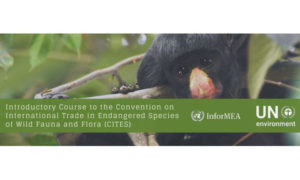

Introductory Course to the Ramsar Convention on Wetlands
InforMEA | Online

CAS Nature en ville
22 September 2023 | HEPIA | Rue de la Prairie 4
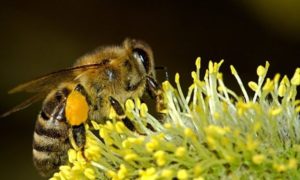
Communicating the value of biodiversity
CBD, UNDP, NBSAP Forum, and Rare | Online
Latest News & Resources
- International Day for Biological Diversity – 22 May | CBD
- Messages for the International Day for Biological Diversity | CBD | including statements from UN Secretary-General, CBD Executive Secretary, CITES, UNEP, Ramsar Convention, IPBES, IPCC, and more.
- Souvenirs sans mauvaise surprise | Switzerland’s Federal Office of the Environment | 24 April 2022
- Measuring Progress: Nature and the Sustainable Development Goals (SDGs) | UNEP & IUCN | 22 May 2021
- Interlinkages between the chemicals and waste multilateral environmental agreements and biodiversity – Key Insights | BRS & Minamata Conventions | 21 May 2021
- Why biodiversity may be more important to your business than you realize | EY | 25 April 2022
- Why trade must be part of the solution to biodiversity loss | UNCTAD | 21 May 2021
- Deuxième édition de « La nuit est belle! » | City of Geneva | 11 May 2021
- 178 communes du Grand Genève participeront à « La nuit est belle ! » le vendredi 21 mai prochain | SIG | 11 May 2021
- Une cartographie de la nuit noire pour mieux la protéger de la pollution lumineuse | Le Dauphiné | 24 April 2021
- Our Planet: One Planet and Sanctuary Forest | Wednesdays for the Planet | Geneva Environment Network | 3 March 2021
- Our Planet: Fresh Water | Wednesdays for the Planet | Geneva Environment Network | 11 November 2020
- Our Planet: Forests | Wednesdays for the Planet | Geneva Environment Network | 4 November 2020
- Dans Ma Nature – Platform to discover nature and biodiversity in Geneva

